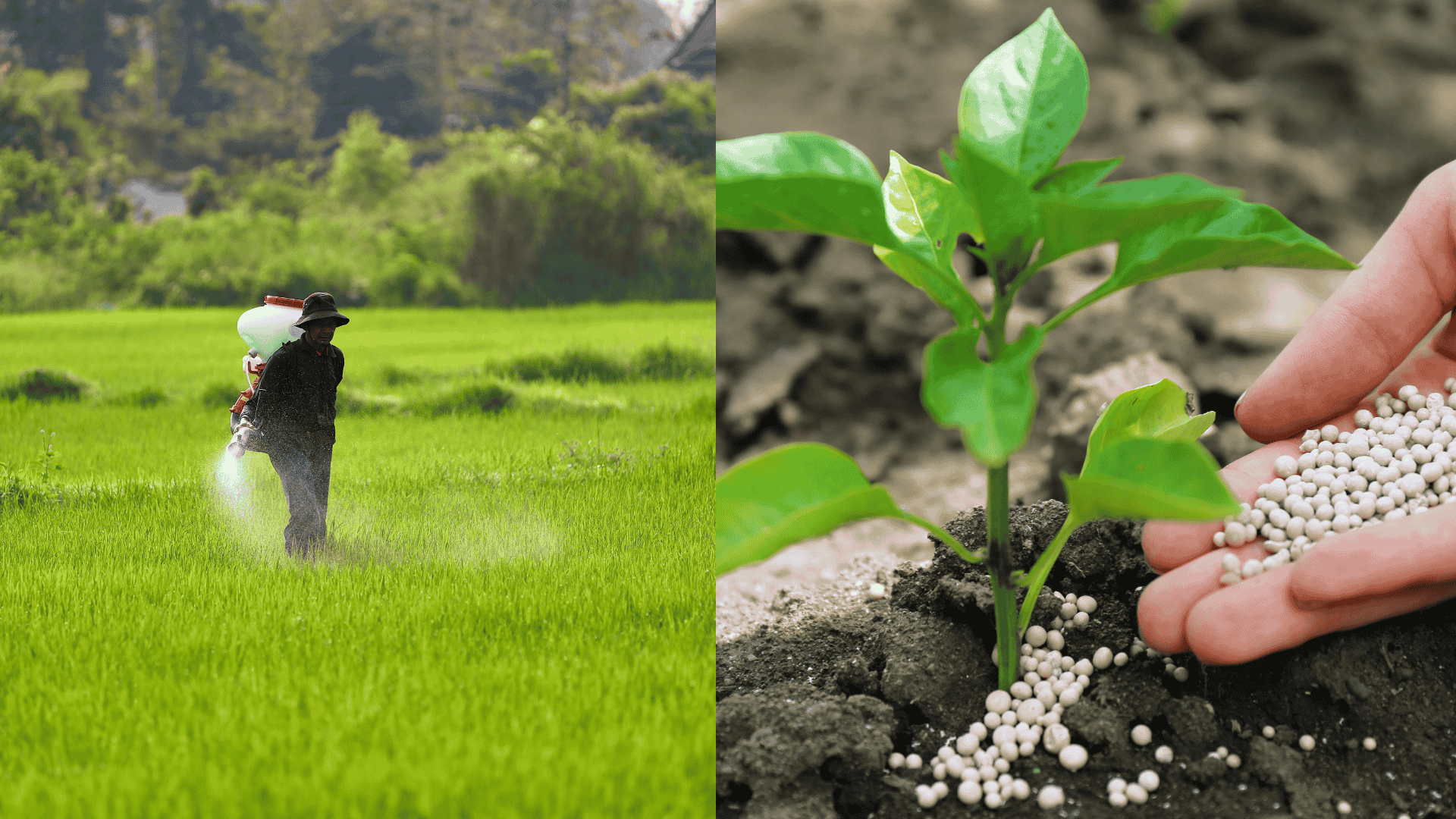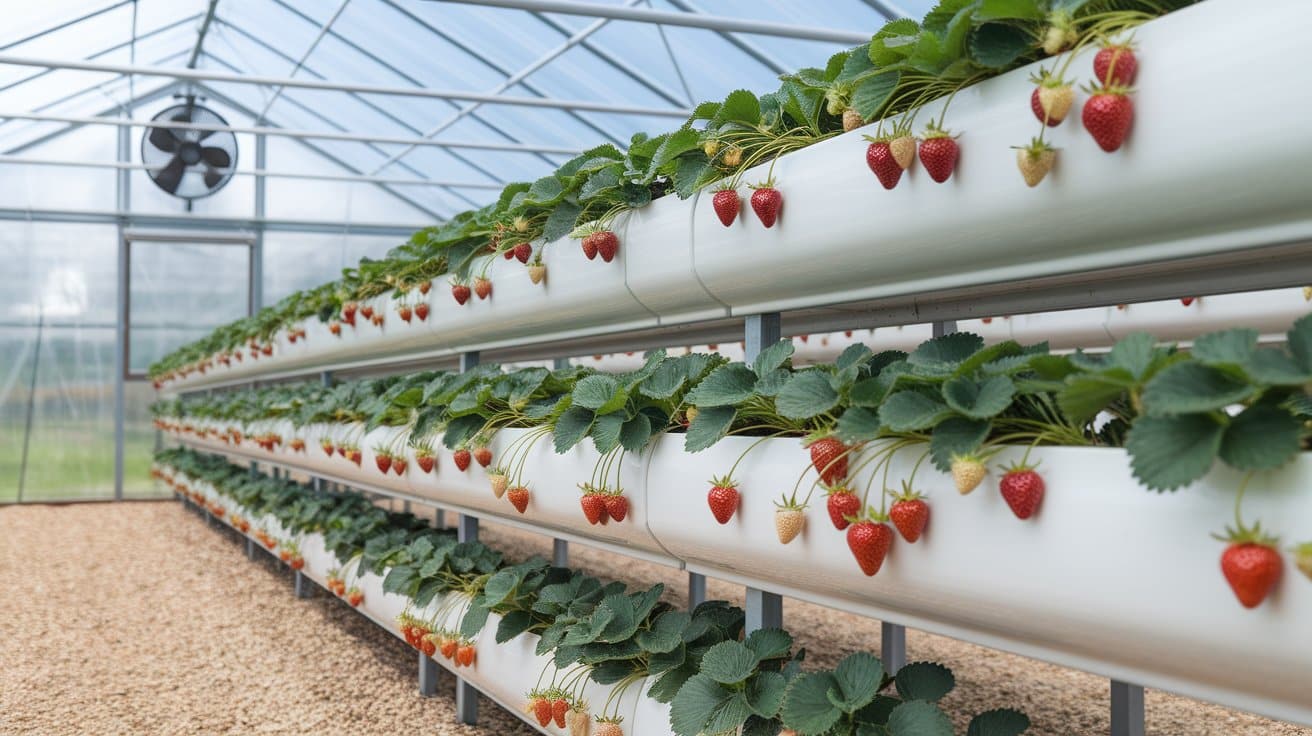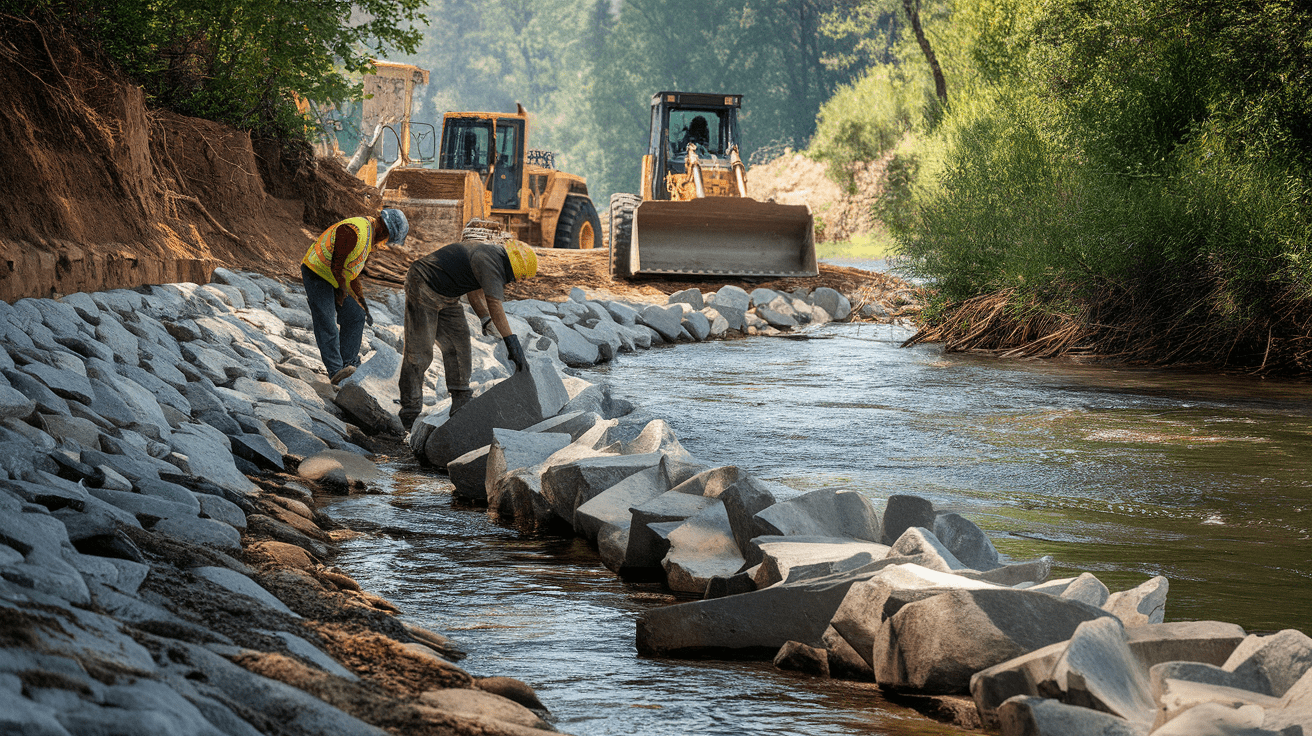Across fields and gardens, synthetic fertilizers promise faster growth, greener leaves, and abundant harvests that seem to redefine productivity.
For many growers, the results appear almost magical at first.
Yet beneath that rapid growth lies an unseen reality: soil loses its vitality, water becomes polluted, and long-term fertility begins to fade.
The very solution that fuels growth can quietly damage the foundation it depends on.
Learning about synthetic fertilizer disadvantages is the first step in preserving soil health, enhancing crop quality, and creating a sustainable foundation for future harvests.
What Are Synthetic Fertilizers?
Synthetic fertilizers are man-made chemical compounds designed to deliver nutrients quickly to plants.
They are produced in factories using concentrated ingredients such as nitrogen, phosphorus, and potassium, the key elements of plant nutrition.
These fertilizers dissolve easily in water, allowing plants to absorb nutrients almost immediately.
While they promote fast growth and high yields, they offer little long-term benefit to the soil.
Over time, continuous use can lead to soil depletion, reduced microbial activity, and environmental concerns such as runoff and pollution.
9 Disadvantages of Synthetic Fertilizers
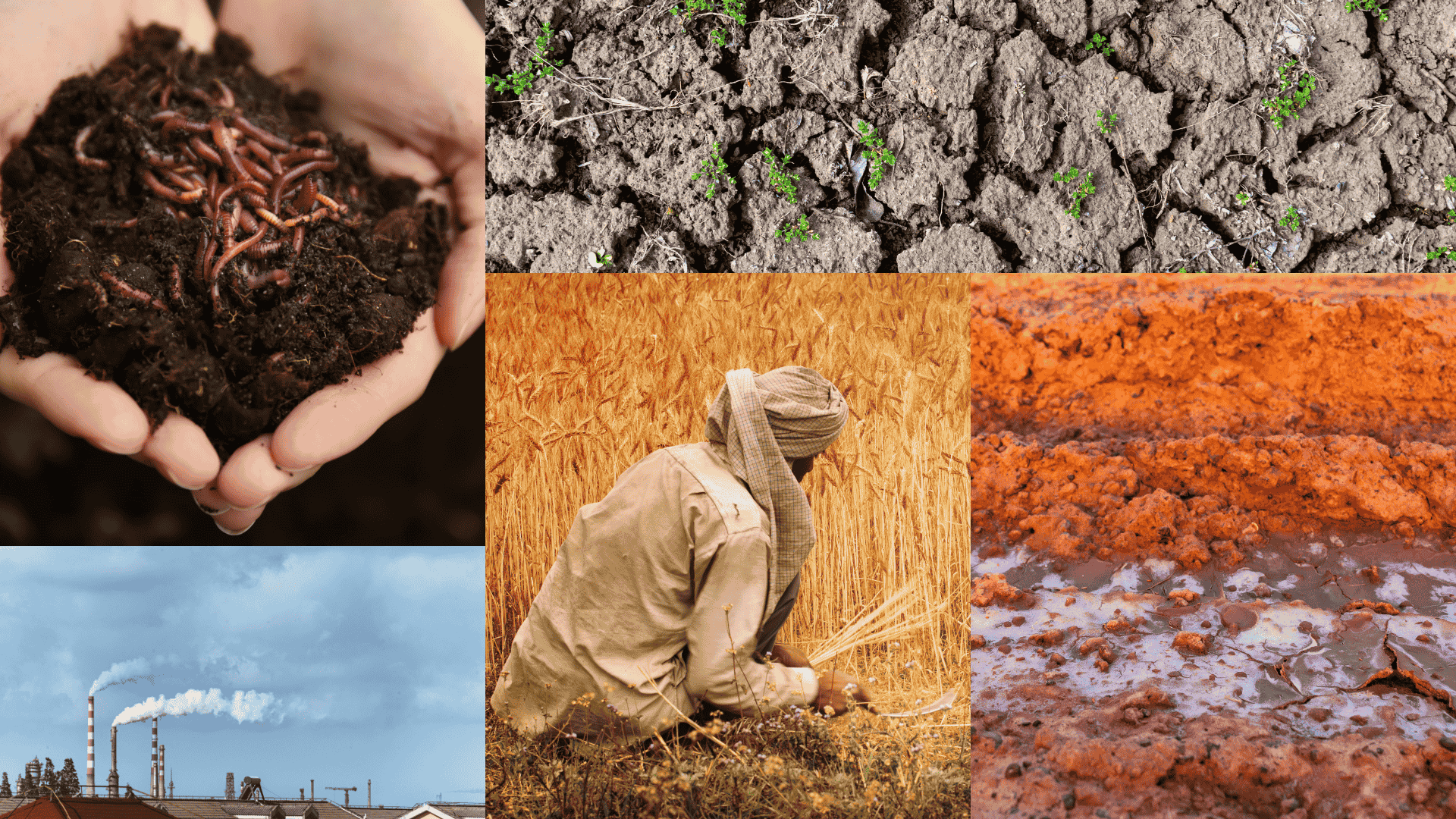
The most common synthetic fertilizer disadvantages begin quietly, such as soil exhaustion, salt buildup, and pollution that gradually weaken the land.
Each consequence unfolds over time, showing how short-term abundance can turn into lasting decline.
1. Soil Degradation
Continuous use of synthetic fertilizers weakens soil structure by removing organic matter essential for moisture and nutrient retention.
And eventually the soil becomes compact, dry, and less fertile.
This degradation reduces productivity, making the land increasingly dependent on chemical inputs for growth.
2. Damage to Soil Microbes
Healthy soil relies on microorganisms like bacteria and fungi to recycle nutrients.
Chemical fertilizers disrupt this balance, harming beneficial microbes.
As these organisms decline, soil loses its natural fertility and becomes dependent on synthetic inputs for continued crop growth.
3. Water Pollution
When synthetic fertilizers are overused, rainwater carries excess nutrients into rivers, lakes, and groundwater.
This pollution leads to algae overgrowth that blocks sunlight and reduces oxygen levels in the water.
As oxygen drops, fish and other aquatic life struggle to survive, disrupting entire ecosystems and harming water quality.
4. Air Pollution
The production and use of synthetic fertilizers release harmful gases into the atmosphere.
Ammonia, nitrogen oxides, and dust particles from fertilizers reduce air quality and contribute to smog formation.
Prolonged exposure can harm human health, while widespread emissions add to global environmental pollution.
5. Salt Build-Up in Soil
Each time synthetic fertilizer is used, small amounts of salt remain in the soil.
Over time, these salts collect near the surface and affect how plants absorb water.
A thin white layer often appears on top of the soil, signaling that too much salt has built up.
6. Soil Salinity Problems
When salt levels become too high, the soil loses its ability to hold water properly.
Moisture is pulled away from plant roots, making them dry and weak.
This reduces soil fertility, slows root growth, and limits the healthy development of crops.
7. Affect on Human Health
Excess nitrates from fertilizers seep into food and water sources.
Long-term exposure can pose serious health risks, especially for infants and pregnant women.
This contamination raises safety concerns about the impact of chemical farming on human well-being.
8. Environmental Issues
The widespread use of synthetic fertilizers contributes to serious environmental problems.
Chemical runoff pollutes rivers and lakes, while gas emissions from production increase air pollution.
These impacts disrupt ecosystems, harm wildlife, and accelerate climate change, creating long-term challenges for environmental stability and sustainability.
9. Financial Burden on Farmers
One of the biggest problems with synthetic fertilizers is their high and unstable cost.
Prices often change with fuel rates, making it harder for farmers to plan expenses.
As soil fertility drops, more fertilizer is needed to maintain yields, increasing costs and long-term dependence.
Synthetic Fertilizer Advantages
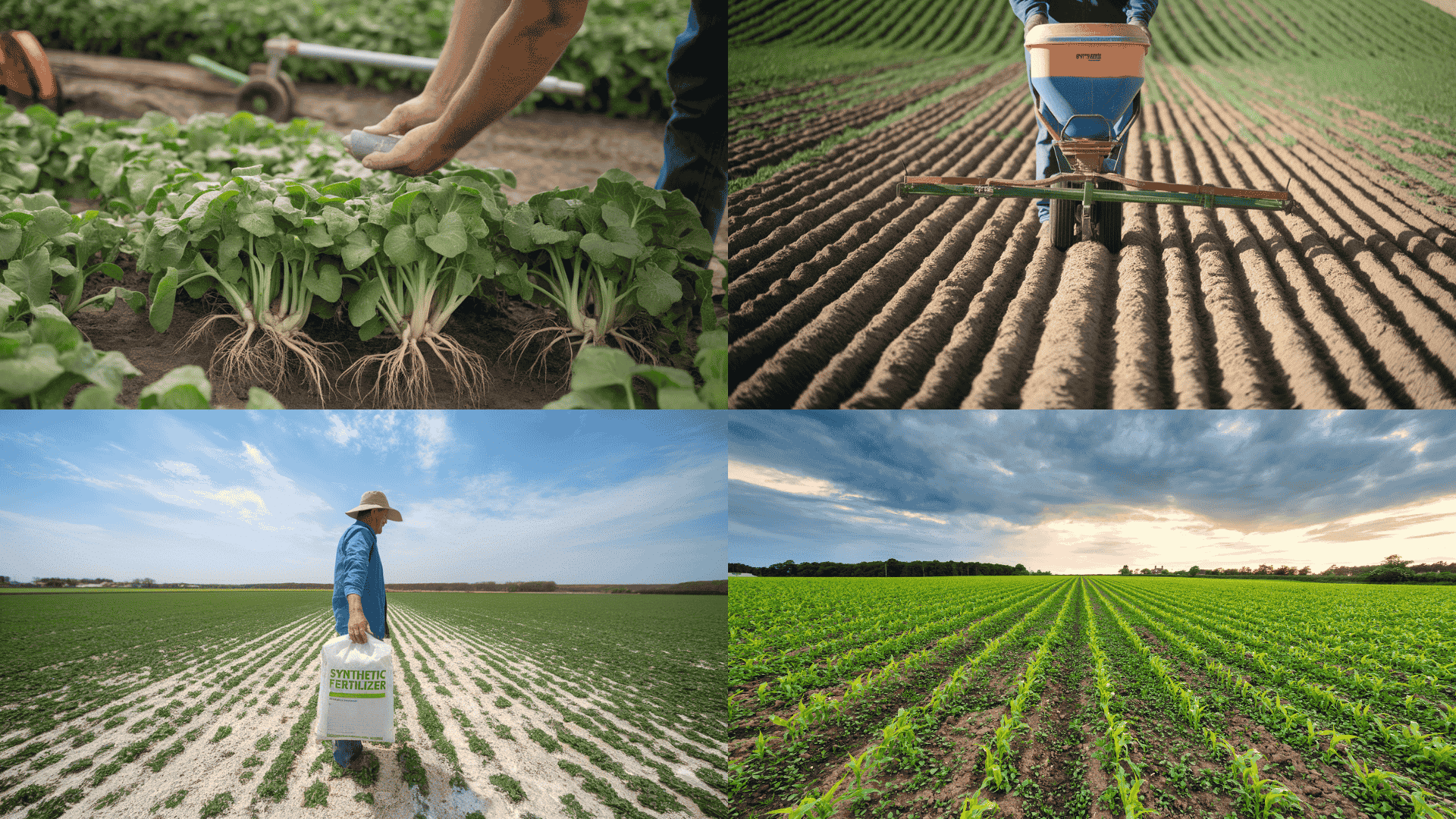
Though synthetic fertilizers come with several disadvantages, there are moments when their use brings certain benefits, especially when handled with care.
In situations where soil nutrients are low or immediate results are needed, these fertilizers can provide an effective solution.
Their consistency and fast action make them useful tools when applied thoughtfully and in moderation.
Synthetic fertilizers’ advantages include:
-
Instant nutrient supply: Delivers essential nutrients quickly, helping plants recover from deficiencies and stress.
-
Ease of application: Simple to measure, apply, and adjust for different soil and crop requirements.
-
Cost-effective: Offers an affordable option that can cover large areas with smaller quantities.
-
Predictable results: Ensures uniform nutrient levels and consistent growth across plants.
When used wisely and combined with organic practices, synthetic fertilizers can support short-term growth without causing long-term harm to the soil.
What Are Organic Fertilizers?
Organic fertilizers, also known as natural fertilizers, come from materials such as compost, manure, or seaweed.
They release nutrients slowly as soil organisms break them down.
This gradual process improves soil structure, increases moisture retention, and supports beneficial microorganisms.
Over time, organic fertilizers help maintain fertility and promote stronger, healthier soil for sustainable growth.
Pros and Cons of Natural Fertilizers
Natural fertilizers, often referred to as organic fertilizers, improve soil over time and nurture a healthier growing environment.
They release nutrients slowly, strengthen soil structure, and encourage sustainable farming practices.
| Aspect | Advantages | Disadvantages |
|---|---|---|
| Nutrient Release | Provides a steady nutrient supply that lasts longer. | Takes more time to show visible results. |
| Soil Health | Enriches soil with organic matter and boosts microbial life. | Nutrient levels can vary depending on the material used. |
| Environmental Impact | Reduces pollution, improves soil texture, and conserves moisture. | It may attract insects or produce odor if not composted properly. |
| Cost and Availability | Builds long-term fertility and lowers future expenses. | Requires more effort to prepare, source, or apply. |
Organic vs Synthetic Fertilizer
Both organic and synthetic fertilizers aim to feed plants, yet their effects on soil and the environment differ sharply.
Comparing them side by side shows how each choice shapes the land’s future.
| Aspect | Synthetic Fertilizer | Organic Fertilizer |
|---|---|---|
| Release Speed | Provides an instant boost of nutrients that plants absorb quickly but fade fast, requiring repeated applications. | Releases nutrients gradually as it breaks down, offering steady nourishment that lasts longer. |
| Soil Health Impact | Feeds plants directly but does not improve soil quality; repeated use can reduce beneficial microbes and compact the soil. | Enriches the soil by adding organic matter, improving structure, and increasing microbial activity. |
| Environmental Impact | Often washes away into waterways, causing pollution and greenhouse gas emissions during production and use. | Breaks down naturally with minimal runoff, reducing pollution and supporting cleaner air and water. |
| Cost and Practicality | Cheaper upfront and easy to apply, but leads to dependency and higher costs over time due to declining soil health. | Requires more effort and slightly higher initial cost, but it builds long-term fertility, reducing future expenses. |
| Use Cases | Useful for quick correction of nutrient deficiencies or rapid growth in large-scale farming. | Best suited for home gardens, organic farms, and anyone focusing on sustainable soil improvement. |
How to Choose the Right Fertilizer?
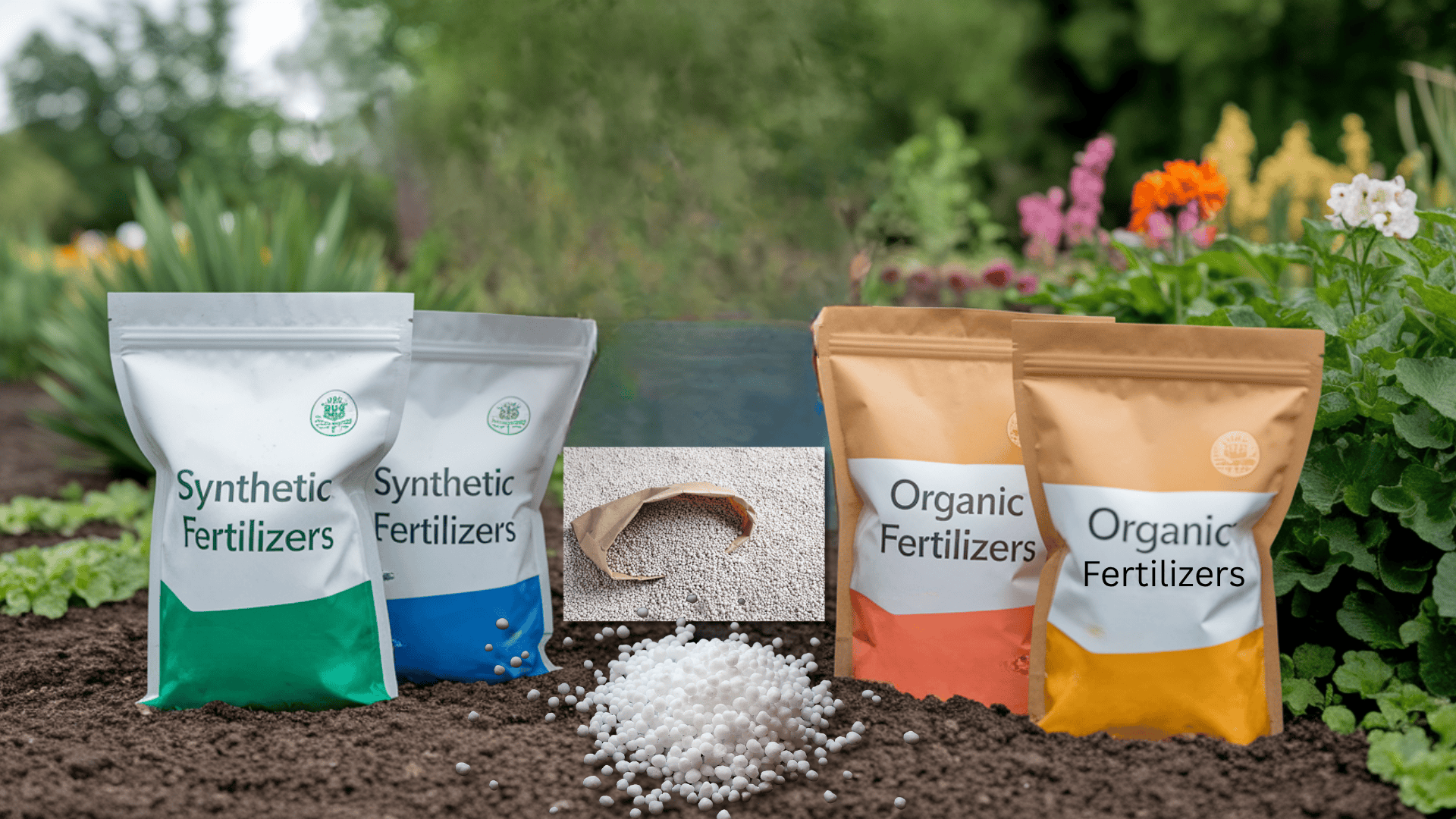
Choosing between synthetic and organic fertilizers becomes easier when guided by soil conditions, crop type, and long-term farming goals.
Follow these simple steps to make the right decision:
Step 1: Identify Your Soil Type
-
Sandy soil loses moisture quickly and benefits most from organic fertilizers that hold water and add structure.
-
Clay soil needs organic matter to improve drainage and prevent compaction.
Step 2: Assess Crop Needs
-
Fast-growing or high-yield crops may need the quick nutrient supply that synthetic fertilizers provide.
-
Perennial or home garden plants thrive better with the slow, balanced nourishment from organic fertilizers.
Step 3: Consider Scale and Resources
-
Small gardens or kitchen plots do well with organic fertilizers that build long-term fertility.
-
Large farms may rely on a mix of organic and synthetic fertilizers for efficiency and consistent yields.
Step 4: Balance Immediate and Long-Term Goals
-
Synthetic fertilizers deliver quick results but can harm soil if overused.
-
Organic fertilizers improve soil structure and microbial health over time, ensuring sustainable growth.
Step 5: Adopt a Combined Approach When Needed
-
Use synthetic fertilizers for rapid nutrient correction during growth stages.
-
Supplement with organic fertilizers to maintain soil health, retain moisture, and prevent nutrient loss.
The best fertilizer choice depends on finding a balance using synthetic fertilizers for immediate plant needs and organic options to protect and enrich the soil for future harvests.
Conclusion
Synthetic fertilizers have changed farming by delivering quick results but leaving long-term effects on soil and the environment.
Common examples include ammonium nitrate, urea, superphosphate, and potassium sulfate, each serving specific nutrient needs.
Sustainable farming, however, requires more than chemical use.
Practices like crop rotation, composting, and soil testing help restore natural balance and reduce dependency.
Choosing fertilizers wisely while protecting soil health ensures lasting productivity and environmental care.
What methods have you used to keep your soil healthy?
Share your insights in the comments below.
Frequently Asked Questions
Can Synthetic and Organic Fertilizers Be Used Together?
Yes, both can be used together for balanced results. Synthetic fertilizers provide quick nutrients, while organic fertilizers improve soil health, creating a sustainable system when used in moderation.
Are Synthetic Fertilizers Harmful to All Plants?
Not all plants react the same way, but continuous use can harm soil life, reducing long-term fertility and plant resilience due to chemical buildup and weakened microbial activity.
Which Fertilizer Is Better for Vegetables?
Organic fertilizers are better for vegetables because they enhance soil health, improve flavor and nutrition, and maintain long-term fertility without chemical residue.

